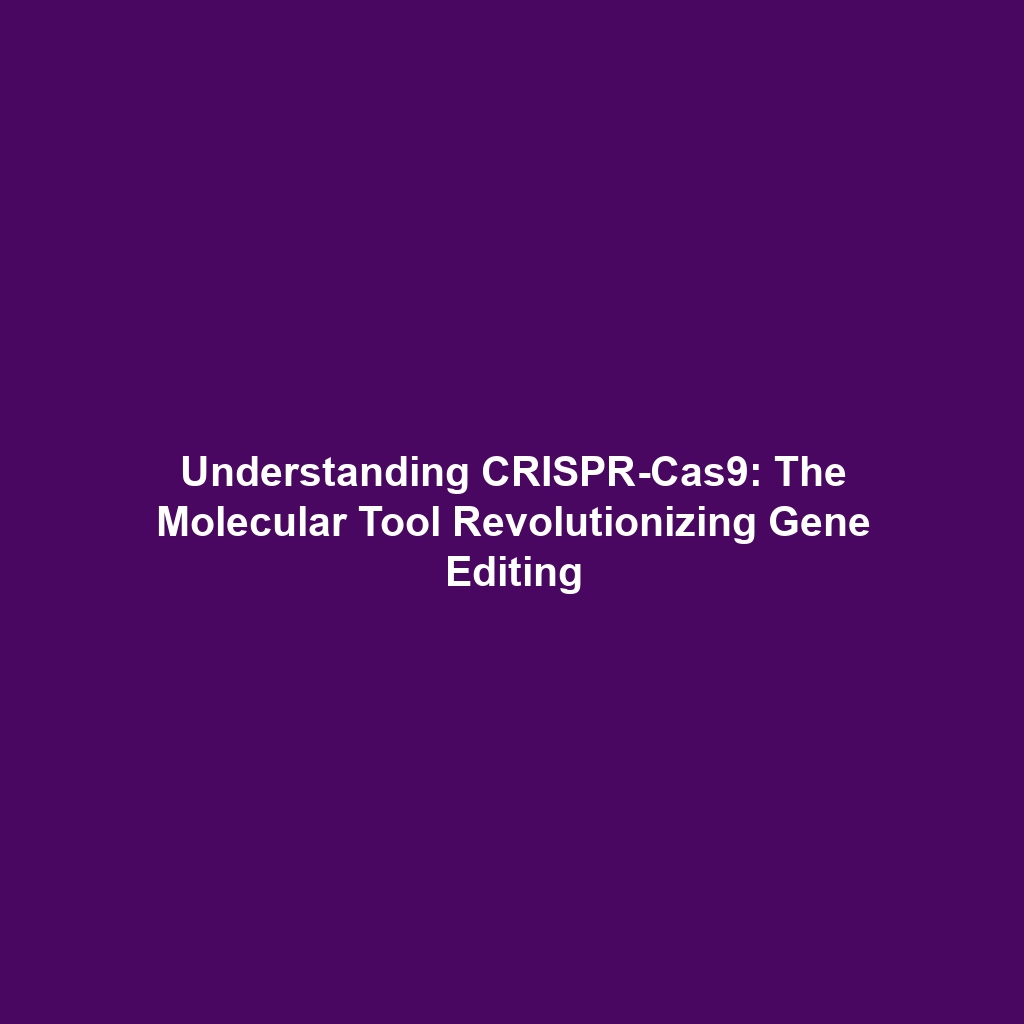The Basics of CRISPR-Cas9: An Introduction to How CRISPR-Cas9 Functions as a Molecular Tool
Introduction
CRISPR-Cas9 has emerged as a groundbreaking tool for gene editing, revolutionizing molecular biology and genetics. This technology enables precise alterations in DNA sequences, paving the way for advancements in medicine, agriculture, and biology. Understanding the basics of CRISPR-Cas9 is essential for grasping its significance in the field of CRISPR Gene Editing. In this article, we will delve into how CRISPR-Cas9 functions, its applications, challenges, and future potential in the realm of genetic engineering.
Key Concepts
The CRISPR-Cas9 system originated from a natural defense mechanism in bacteria, allowing them to fend off viral attackers. The key concepts of CRISPR-Cas9 include:
- CRISPR Sequences: Short palindromic repeats found in bacterial DNA that serve as a genetic memory of past infections.
- Cas9 Protein: An endonuclease that functions as the “molecular scissors,” cutting DNA at specific sites.
- Guide RNA (gRNA): A synthetic RNA designed to match and bind to a specific DNA sequence, directing Cas9 to the right location.
These elements work together to facilitate targeted gene editing, making CRISPR-Cas9 a versatile and powerful tool within CRISPR Gene Editing.
Applications and Real-World Uses
CRISPR-Cas9 has numerous applications across various fields, showcasing its utility as a molecular tool. Significant uses include:
- Medical Research: Targeting genetic diseases such as sickle cell anemia and cystic fibrosis.
- Agriculture: Creating disease-resistant crops through targeted editing of plant genomes.
- Biotechnology: Developing gene therapies by correcting mutations or enhancing beneficial traits in organisms.
The applications of CRISPR-Cas9 illustrate its transformative impact on CRISPR Gene Editing and its potential to solve pressing challenges in healthcare and food security.
Current Challenges
Despite its promise, the CRISPR-Cas9 technology faces several challenges:
- Off-Target Effects: Unintended edits to DNA that can lead to harmful consequences.
- Ethical Concerns: The implications of editing human embryos and potential misuse of gene editing technologies.
- Delivery Mechanisms: Effectively delivering CRISPR components into target cells presents logistical challenges.
Addressing these challenges is essential for advancing safe and effective applications of CRISPR-Cas9 in genetics.
Future Research and Innovations
Future research on CRISPR-Cas9 promises exciting innovations, including:
- Next-Generation CRISPR: Developing more precise editing technologies such as CRISPR-Cas12 and Cas13 that reduce off-target effects.
- Improved Delivery Systems: Enhancing methods for delivering CRISPR components to specific tissues or cells.
- Ethical Frameworks: Establishing guidelines for researchers to ethically use gene editing technologies.
These breakthroughs will enhance the utility of CRISPR-Cas9 and expand its applications in CRISPR Gene Editing.
Conclusion
In summary, the basics of CRISPR-Cas9 reveal a powerful molecular tool that enhances our ability to edit genes with precision. Its applications can lead to revolutionary advancements in various fields, despite facing notable challenges. Continued research and ethical considerations are crucial as the technology evolves. To stay informed about the latest developments in CRISPR Gene Editing, consider exploring related topics such as gene therapies or biotechnological innovations.

